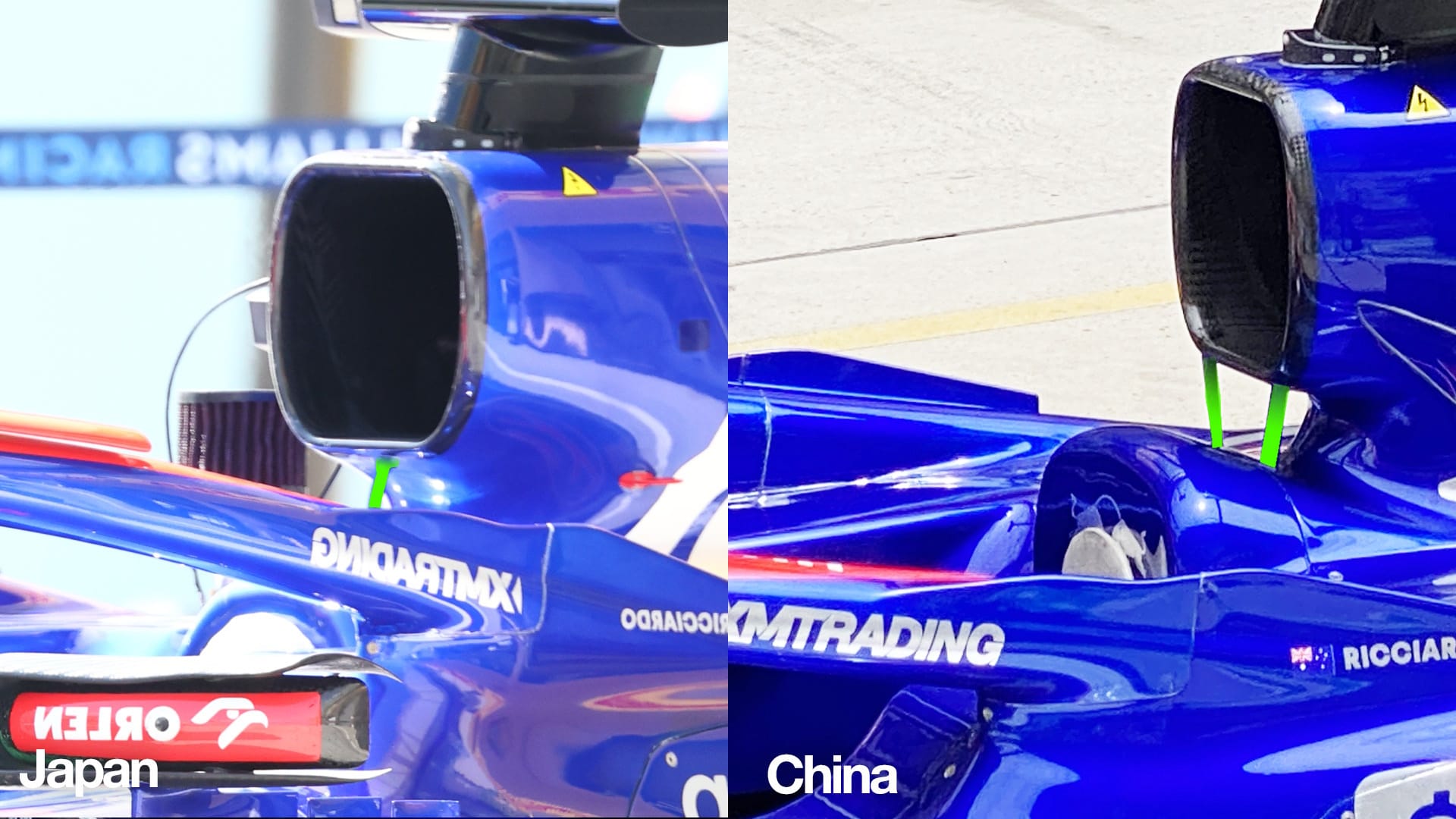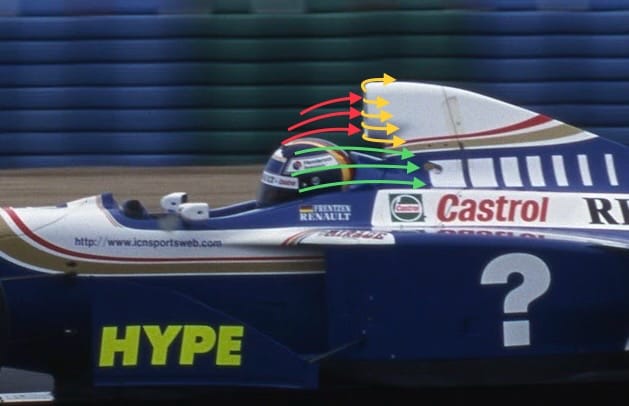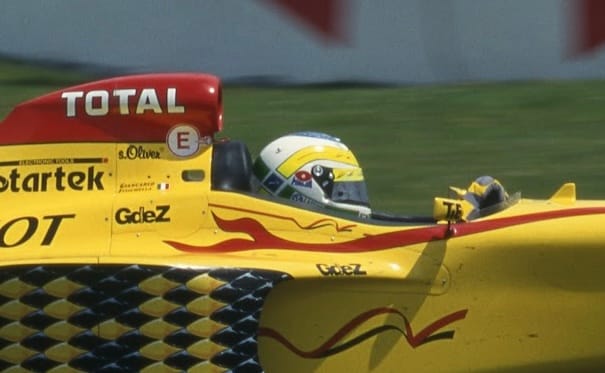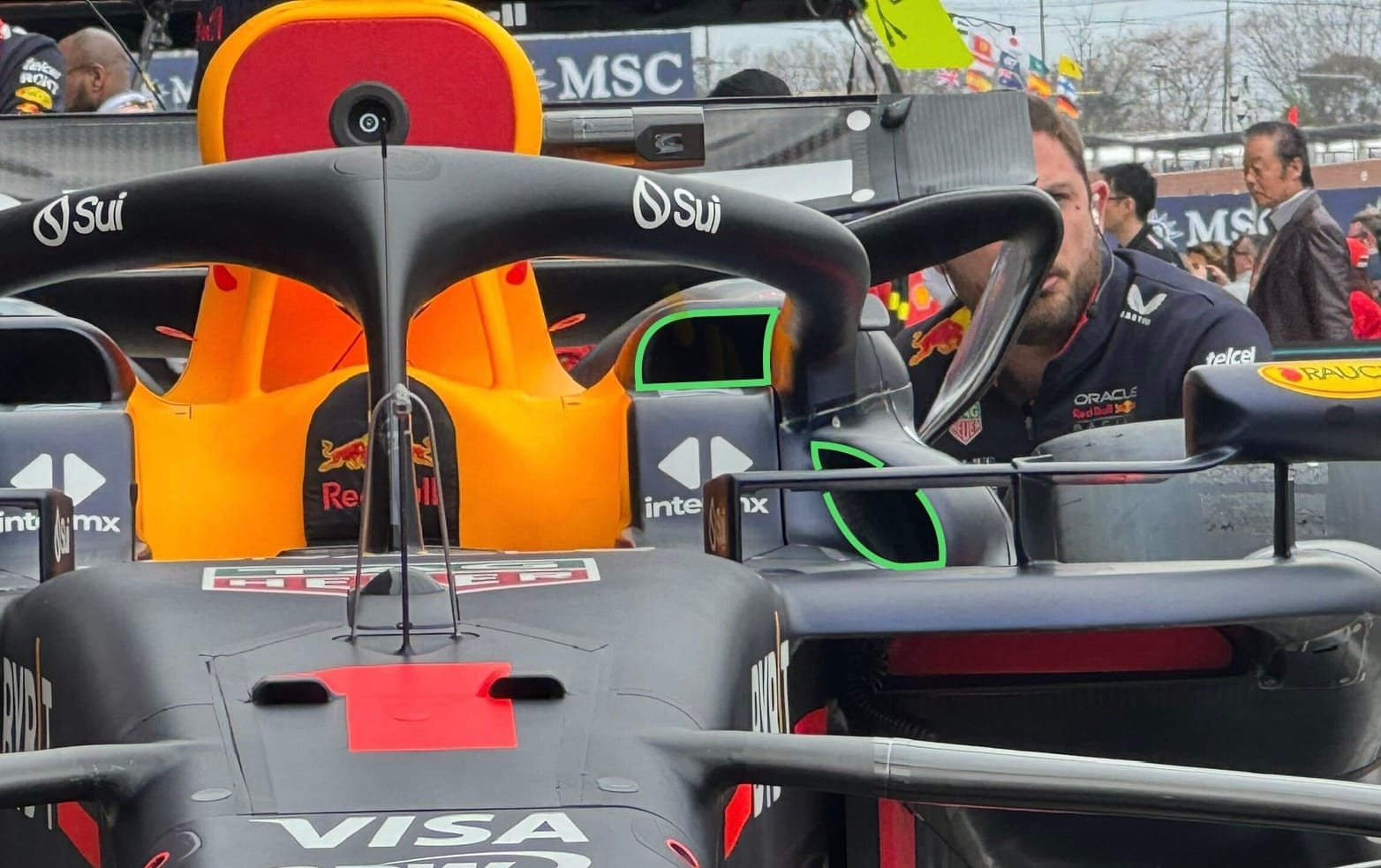Four teams have made modifications to either the halo fascia or the head restraint in the cockpit in recent races, underscoring how aerodynamically sensitive the area around the driver's head is.
Mercedes has added what it describes as a pair of small vanes behind the halo in Shanghai, designed to control airflow as it exits the cockpit – thus improving airflow to the rear wing.
Williams made a slight modification to the shape of the fairing on the central portion of the halo where it separates into two parts that curve outward from the cockpit. Its aim is to improve aerodynamic efficiency and airflow to the rear wing and crossbar.
RB has modified the shape of the headrest behind the driver's head on the grounds that it reduces airflow separation.

This was followed by Alpine reorganizing its halo vanes on either side of the Monaco's cockpit to better distribute airflow over the rear wing and wing beam at the rear of the car.
None of these changes were obviously major, but the fact that all four teams made adjustments proves how much gain can be made from compensating for the inconvenience of having to accommodate a driver's head. This has been a major challenge for many years.
If we look back to 1996, Formula 1 introduced regulations requiring a mandatory head restraint around the sides of a driver's helmet to protect their heads from side impacts. This has led to some very different solutions being offered.
Ross Brawn, then working at Benetton, was not very complimentary of the design that Adrian Newey at Williams and us at Jordan had come up with. In comparison, Brown's Benetton and John Barnard's Ferrari were like a rubbish jump in this area!
What we found meant that all teams started to look more closely at the airflow around the driver's head and the airbox opening for 1997. It was important then, it's the same now but it's interesting to see how the trends move forward even when the regulations are different very.


With naturally aspirated engines of the 1990s, you could get a positive pressure inside the airbox of about 30 mb.
If you have a good air box design, that equates to 25 horsepower, so it's worth getting. He ensured that the engine got as much airflow as possible. And when it comes to engines, the more air you have, the stronger the explosions that are important for generating power. Simply put, you get more bang for your buck.
As usual during that era, Williams did slightly better than we did, but had the advantage of knowing who their drivers would be fairly early on in the car's design. We were never sure until about the first race!
When locating this area, you really need to know where the driver's head is. If you end up with a driver that is 5 centimeters taller or short-legged and long-bodied, it won't look quite as detailed.
On Williams cars, the red arrows show the flow upstream into the airbox, while the green arrows show the flow downward around the side of the driver's head. The yellow arrows are the flow as it spills around the sides of the intake.

As you can see in the Jordan River, it's very similar – maybe not as detailed.

It wasn't just a matter of making the opening larger, it achieved higher pressure and greater strength. When you reach this kind of pressure, the excess flow will spill out around the front edge of the inlet.
The actual ignition order of the engine—that is, the sequence in which the cylinders were fired—was also important to how the pulse was distributed in the airbox, and with it the transfer of fuel from one cylinder to the next.


Today's engines have turbos, which add positive pressure to the engine's intake system. The actual intake is not critical to engine performance, but the turbulence created by the driver's helmet and the effect on whatever is being cooled by the airflow entering the roll bar inlet is.
Also when the flow is cut off or when the turbo doesn't need maximum flow, a spill can easily cause the driver's helmet to vibrate due to turbulence. It can also reduce the efficiency of the downforce produced by the rear wing. Helmet polishing is something George Russell has complained about this season.

A close-up here of Russell in his Mercedes shows the side of the headrest and the rear halo outlining the blockage next to the driver's head. You can use a limited-sized fairing around the main tubular body of the halo so that it enables you to redirect the airflow slightly.
However, the helmet is very similar to our 96/97 versions which defines the flow structure coming out of it and around the headrest.
I used the same colors to highlight the flow. The main difference is how the stream exits the side area of the headrest directly in front of the TeamViewer label. The rest is very similar.
If you're trying to take the next step in managing flow around a driver's helmet, when the air intake starts to close, what better way to do that than to put some cooling duct vents in that area?
These, combined with the fact that there is a low pressure zone at the outlet of these ducts, means that the flow through them will be more consistent across the speed range than simply being fed into the main stream airflow.
This shot of Red Bull with its green-shaded entrances shows just that.

It just shows how every part of the car plays a crucial role in aerodynamic performance.
The difference between getting the details of the headrest, driver position and halo right or wrong will be a big time so expect further developments in this area.




